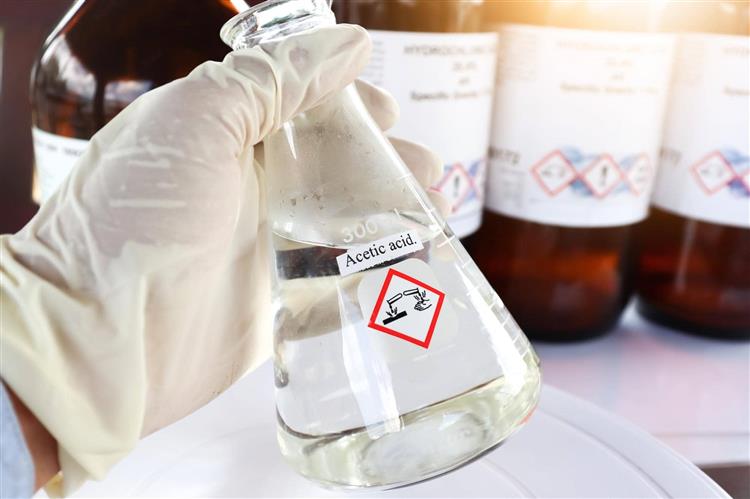
- 30 January 2024
- 1046 Views
Introduction to Formic Acid Products
Overview of Formic Acid
Formic Acid, also known as methanoic acid, is the simplest carboxylic acid, recognized for its potent antibacterial properties and sharp, pungent odor. It is a colorless liquid that is highly useful in various industrial applications due to its acidic nature.
Importance in Various Industries
Formic Acid is pivotal in numerous sectors, notably in agriculture, leather processing, textile manufacturing, and rubber production. Its ability to act as a preservative and antibacterial agent makes it valuable in feedstock preservation and as a pesticide.
Chemical Composition and Properties of Formic Acid Products
Detailed Analysis of Chemical Structure
Formic Acid is chemically represented as HCOOH. It contains a carboxyl group and is highly soluble in water, with the ability to donate a proton (H+) due to its acidic nature.
Unique Physical and Chemical Properties
This acid is known for its pungent odor, corrosive properties, and its ability to lower pH levels. It's a natural antibacterial agent and a potent chemical reagent in various synthesis processes.
Applications of Formic Acid in Different Industries
Use in Agriculture and Animal Husbandry
Formic Acid is widely used as a preservative in animal feed, preventing spoilage and protecting nutritional value. It also acts as a pesticide, controlling pests in crop production.
Leather and Textile Industry Applications
In leather processing, Formic Acid is used for tanning, helping to coagulate and stabilize the collagen fibers. In textiles, it's used to neutralize alkaline media and as a mordant in dyeing processes.
Rubber Industry and Other Uses
Formic Acid plays a critical role in coagulating latex in rubber manufacturing. It is also used in cleaning products, as a solvent, and in various chemical syntheses.
Manufacturing Process of Formic Acid Products
Overview of Production Techniques
An exploration of the methods used in the industrial production of Formic Acid, including chemical synthesis from methanol.
Environmental and Safety Considerations
Discussion on the environmental aspects of Formic Acid production, its biodegradability, and safety measures necessary due to its corrosive nature.
Formic Acid Products in Health and Safety Regulations
Health Impacts and Safety Guidelines
Analysis of the health risks associated with Formic Acid exposure, including its corrosive effects and toxicity, and guidelines for safe handling and use.
Regulatory Status in Various Regions
Insight into the legal framework governing the use, handling, and transportation of Formic Acid in different countries, focusing on safety standards and environmental regulations.
Future Trends and Developments in Formic Acid Technology
Recent Advancements and Research
Coverage of the latest developments in Formic Acid applications, including its use in renewable energy and more efficient production methods.
Potential Future Applications and Market Trends
Exploration of emerging uses for Formic Acid in various sectors, and predictions for market growth and evolving industry demands.
Benefits and Risks of Formic Acid
Benefits
- Preservative Qualities: In agriculture, Formic Acid is valued for its ability to preserve silage and animal feed, preventing spoilage and bacterial growth.
- Leather Processing: It's crucial in leather tanning, aiding in coagulation and improving the quality of leather products.
- Textile Industry: Formic Acid is used for neutralizing alkaline conditions and as a mordant in dyeing, enhancing the quality of textile products.
- Rubber Manufacturing: In the rubber industry, it plays a vital role in the coagulation of latex, contributing to efficient rubber production.
- Cleaning Agent: Its acidic nature makes it effective in household and industrial cleaning products.
Risks
- Corrosive Nature: Formic Acid is highly corrosive and can cause burns upon contact with skin or eyes.
- Toxicity: Inhalation of Formic Acid vapors can be harmful, leading to respiratory issues.
- Environmental Impact: Improper disposal can lead to environmental hazards, particularly affecting aquatic life.
Important Tips for Using Formic Acid
- Safety Equipment: Always use appropriate safety gear, including gloves, goggles, and protective clothing, when handling Formic Acid.
- Ventilation: Ensure good ventilation in areas where Formic Acid is used or stored to avoid inhalation of fumes.
- Storage: Store in a cool, dry place, away from incompatible substances like alkalis and oxidizing agents.
- Spill Management: In case of spills, neutralize Formic Acid with a weak base and clean it up promptly, following safety guidelines.
- Disposal: Dispose of Formic Acid and its containers in accordance with local environmental regulations to prevent pollution.
How Formic Acid Works
- Chemical Reaction: Formic Acid, a carboxylic acid, releases hydrogen ions (H+) when dissolved in a solution, thereby exhibiting its acidic nature.
- Preservation: In feed preservation, it lowers pH and inhibits bacterial growth, thus preserving the feed's nutritional value.
- Tanning Process: In leather tanning, it helps stabilize the collagen fibers, making the leather durable and less susceptible to decay.
- Dyeing Process: In textiles, it acts as an acidulant, ensuring proper dye fixation to the fabrics.
- Coagulation: In rubber manufacturing, its acidic nature aids in the coagulation process, turning liquid latex into a solid form.
Understanding the functional properties and safe handling of Formic Acid is crucial for its effective use across various industrial applications.
Conclusion
Formic Acid, with its unique properties and versatile applications, has established itself as an indispensable chemical in various industries. From agriculture to leather processing, and from textiles to rubber manufacturing, its impact is profound. Its ability to preserve, coagulate, and act as an effective cleaning agent highlights its multifaceted utility. While its benefits are substantial, it is crucial to handle Formic Acid with care due to its corrosive nature and potential environmental impact. Understanding its properties and proper usage is key to harnessing its full potential, making Formic Acid a valuable asset in industrial and manufacturing processes.
